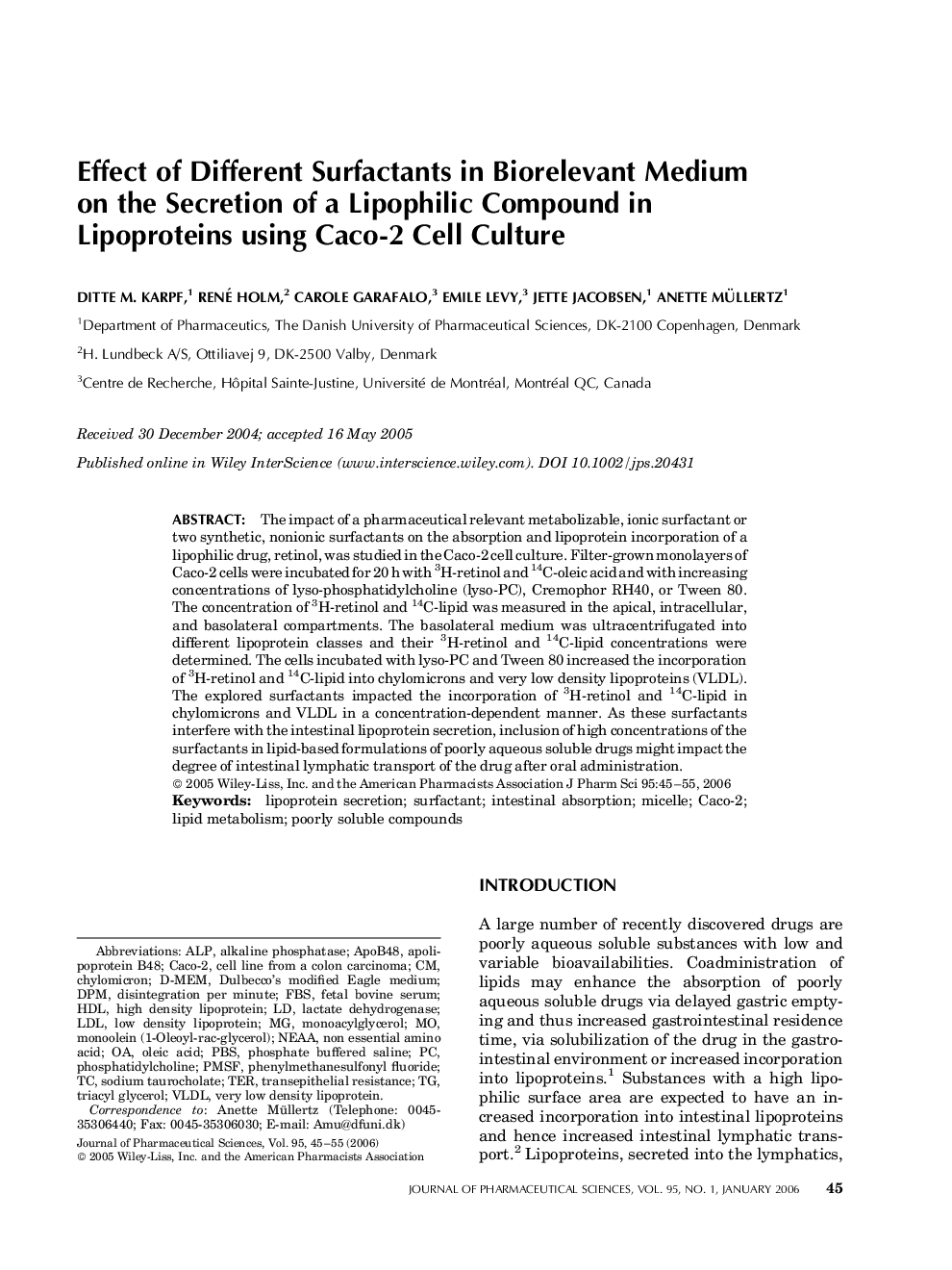| Article ID | Journal | Published Year | Pages | File Type |
|---|---|---|---|---|
| 2486300 | Journal of Pharmaceutical Sciences | 2006 | 11 Pages |
Abstract
The impact of a pharmaceutical relevant metabolizable, ionic surfactant or two synthetic, nonionic surfactants on the absorption and lipoprotein incorporation of a lipophilic drug, retinol, was studied in the Caco-2 cell culture. Filter-grown monolayers of Caco-2 cells were incubated for 20Â h with 3H-retinol and 14C-oleic acid and with increasing concentrations of lyso-phosphatidylcholine (lyso-PC), Cremophor RH40, or Tween 80. The concentration of 3H-retinol and 14C-lipid was measured in the apical, intracellular, and basolateral compartments. The basolateral medium was ultracentrifugated into different lipoprotein classes and their 3H-retinol and 14C-lipid concentrations were determined. The cells incubated with lyso-PC and Tween 80 increased the incorporation of 3H-retinol and 14C-lipid into chylomicrons and very low density lipoproteins (VLDL). The explored surfactants impacted the incorporation of 3H-retinol and 14C-lipid in chylomicrons and VLDL in a concentration-dependent manner. As these surfactants interfere with the intestinal lipoprotein secretion, inclusion of high concentrations of the surfactants in lipid-based formulations of poorly aqueous soluble drugs might impact the degree of intestinal lymphatic transport of the drug after oral administration. © 2005 Wiley-Liss, Inc. and the American Pharmacists Association
Related Topics
Health Sciences
Pharmacology, Toxicology and Pharmaceutical Science
Drug Discovery
Authors
Ditte M. Karpf, René Holm, Carole Garafalo, Emile Levy, Jette Jacobsen, Anette Müllertz,
